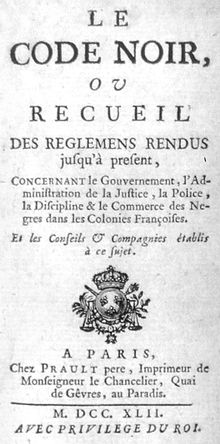Afro-Mexican History: Trends and Directions in ScholarshipPosted in Articles, Caribbean/Latin America, History, Literary/Artistic Criticism, Media Archive, Mexico on 2012-03-08 02:36Z by Steven |
Afro-Mexican History: Trends and Directions in Scholarship
History Compass
Volume 3, Issue 1 (January 2005)
14 pages
DOI: 10.1111/j.1478-0542.2005.00156.x
Ben Vinson, III, Vice Dean for Centers, Interdepartmental Programs, and Graduate Programs
Johns Hopkins University
This article surveys the development of a relatively new and vibrant subfield in Latin American History, mapping out the major stages of its evolution and signaling key intellectual debates. While much of the scholarship on Afro-Mexican history has been produced in the last thirty-five years, this article aims to contextualize these writings within a broader historical framework. This process shows more clearly the various independent and interdependent tracks that exist within the study of Mexico’s black population.
Until very recently, the study of Mexico’s black population could not be categorized as forming any particular school of thought or intellectual inquiry. The impressionistic nature of the writings on blacks, which persisted even well into the 20th century, frequently worked to subordinate Afro-Mexican history to broader themes, such as nationalism, the economy, regional development, and general social conditions. Nevertheless, it is still possible to outline the evolution of historical scholarship on blacks in Mexico, extending back into the colonial period. What we discover is that in many ways, the discussion of blacks has followed the trajectory of the political development of the nation. Writings on Afro-Mexicans can be grouped into periods that correspond to (1) Mexico’s colonial and independence era (1521–1821); (2) the pre-revolutionary period (1822 –1910); and (3) the post-revolutionary period (1921 to current). Within these periods there is much nuance to account for, but by and large, they provide useful markers by which to evaluate the progression of the intellectual conversation on Mexico’s blackness.
In the colonial period, outside of the abundant ecclesiastical and government documentation that can still be found in the colonial archives, very few published works concentrated directly upon blacks. What survives comes mainly in three forms: traveler’s accounts, narrative accounts of the Conquest of Mexico, and political treatises. In terms of travelogues, the narratives of men such as Thomas Gage, Juan F. Gemelli Carreri, Fray Francisco de Ajofrín, and Alexander von Humbolt are revealing for the patterns of discourse that they uncover. By and large, their writings depict mulattos, pardos, and negros in a negative light, to the extent that they cite these populations as bearing a corrupting influence on the social development of the colonies. Meanwhile, the accounts of the Conquest, frequently referred to as the “chronicles,” represent a different, although related genre. More historically grounded, the writings of men such as Francisco López de Gomara (c. 1552), Bernal Díaz del Castillo (c. 1562), and Fray Diego Durán (c. 1580) make reference to the black military auxiliaries who accompanied the Spanish conquistadors. As can be imagined, blacks appear as ornaments to the main story, or as scapegoats and anti-heroes that complemented the dominant Spanish presence. Finally, in colonial political treatises, blacks make equally brief appearances in works discussing social conditions, military organization, and municipal control. Perhaps more than in the other types of texts however, the Afro-Mexican population appears less of a novelty, being discussed as an embedded element of colonial life. It is here where we find blacks becoming more tightly associated with the colony’s amorphous “plebeian” class…
…Debates about the worth of blacks took a slightly different course in the context of the Mexican Revolution. Indeed, the cultural landscape produced by this seminal event had a lasting effect on Afro-Mexican historiography. After the revolution, Mexico placed a heightened emphasis on the hybrid nature of its population to demonstrate the strength of its national character. But a certain type of hybrid phenotype was praised – the mestizo, or mixture of white and Indian. Blacks were literally written out of the national narrative. Excluding blacks from the national image was a process that was long in the making, but arguably, it was in the 1920s when the process had some of its strongest influences…
Read the entire article here.





